- I am Assoc. Prof. Dr. Burkay Genç
- BSc Industrial Engineering, Bilkent Univ.
- MSc Computer Engineering, Bilkent Univ.
- PhD Computer Science, Waterloo Univ. Canada
- Izmir Economy University
- TED University
- Hacettepe University, Inst. of Population Studies
- Hacettepe University, Computer Engineering Dept.
- Data mining, Algorithms, Discrete Math
- Hacettepe University, Informatics Institute
- Game Technologies
- Game Prototyping, Game Design, Game Architecture, Computational Geometry, Web Based Game Development
- Game Technologies
22 Şub, 2024
Who am I?
What is this course about?
- History of Games
- Gaming and Development Platforms
- Game Development Languages and Libraries
- Game Engines
- Game Design
- Prototyping
- Game Genres
- Game Programming Patterns
Grading
- Tentative
- In-class assignments (40-50%)
- Exams/Projects (50-60%)
What about 423?
- This course will go in tandem with 423
- 423 will include more practice
- Unreal Engine
- 421 is more design oriented
A Brief History of Digital Games
What is a digital game?
- What is a game?
What is a digital game?
- What is a game?
- Has rules
- Has an end
- Can win or lose
- Requires skills and experience to get better
- Provides fun
- …
What is a digital game?
- The following are not games when alone
- Puzzles
- Sports
- Unless structured and managed
- Entertainment
- Play (is not game)
- Although in Turkish they both translate as “oyun”
- Playing with a toy is not a game
Are the following games?
- Chess
- Football
- Sudoku
- Play house (evcilik)
- Tag (Körebe)
- Crosswords
- Backgammon
- Parachuting
- Karaoke
What is a digital game
- A digital game is a game that is played on an electrical device
- not “…played using…”
- If we were really picky, we would say “a digital device” to exclude analog devices
- But we will abuse the term to include analog electrical devices
- Because “electrical games” sound worse than “digital games”
- And, “computer games” is very restrictive
- And, “video games” is just plain out bad
When did digital games start?
- Mechanical games are not counted
- Earliest digital games are observed in 1940s
- Second world war
- Huge spending on “devices”
- Tons of inventions were done during this era
- Including most fundamental work on computers
- Check Turing
1940

For the Westinghouse display at the World’s Fair, Edward U. Condon designs a computer that plays the traditional game Nim in which players try to avoid picking up the last matchstick. Tens of thousands of people play it, and the computer wins at least 90% of the games.
The game of NIM is also very special in Game Theory. It provides a basis to analyse perfect information, impartial games. Technically, for any NIM setup, you can know who will win before you even make the first move.
1947

Thomas T. Goldsmith Jr. and Estle Ray Mann file a patent for a “cathode ray tube amusement device.” Their game, which uses a cathode ray tube hooked to an oscilloscope display, challenges players to fire a gun at a target.
CRT technology powered early televisions and computer monitors. It was power hungry, slow, very inaccurate, noisy and heavy.
1950

Claude Shannon lays out the basic guidelines for programming a chess-playing computer in an article, “Programming a Computer for Playing Chess.” That same year both he and Englishman Alan Turing create chess programs.
Shannon is also known for laying out the foundations of information theory.
Turing is well known for contributing to the foundations of computing theory. The Turing Test is named after him. He is also well known for constructing a device that cracked the German cyphers in WWII.
1952

A. S. Douglass creates OXO (a game known as noughts and crosses in the United Kingdom and tic-tac-toe in the United States) on Cambridge’s EDSAC computer as part of his research on human-computer interactions.
1954

Programmers at New Mexico’s Los Alamos laboratories, the birthplace of the atomic bomb, develop the first blackjack program on an IBM-701 computer.
The MIT Blackjack Team was a group of students and ex-students. The students were from Massachusetts Institute of Technology, Harvard University, and other leading colleges; they used card counting techniques and more sophisticated strategies to beat casinos at blackjack worldwide. The team and its successors operated successfully from 1979 through the beginning of the 21st century. Many other blackjack teams around the world have been formed with the goal of beating the casinos.
1955

The long tradition of military wargaming enters the computer age when the U.S. military designs Hutspiel, in which Red and Blue players (representing NATO and Soviet commanders) wage war.
Hutspiel was a theater-level war game created in 1955 on an analogic computer by the Operations Research Office, a civilian military research center conducted by the Johns Hopkins University. The game was played by two people, red and blue, representing a war simulation between NATO and USSR forces. The game was designed to study the use of tactical nuclear weapons and air support in Western Europe in the case of Soviet invasion.
1956

Arthur Samuel demonstrates his computer checkers program, written on an IBM-701, on national television. Six years later the program defeats a checkers master.
Arthur Lee Samuel (December 5, 1901 – July 29, 1990) was an American pioneer in the field of computer gaming and artificial intelligence. He popularized the term “machine learning” in 1959. The Samuel Checkers-playing Program was among the world’s first successful self-learning programs, and as such a very early demonstration of the fundamental concept of artificial intelligence (AI). He was also a senior member in the TeX community who devoted much time giving personal attention to the needs of users and wrote an early TeX manual in 1983.
1957

Around 1957 IBM programmers led by American mathematician, chess player, and computer chess pioneer Alex Bernstein, including Michael de V. Roberts, Timothy Arbuckle and Martin Belsky, developed The Bernstein Chess Program, the first complete chess program, on an IBM 704 computer. The program was effective enough to defeat an inexperienced human opponent. Bernstein’s program employed the Type B Strategy proposed by Claude Shannon in his 1950 paper, Programming a Computer for Playing Chess.
Bernstein playing his chess program at the console of the 704 mainframe. Bernstein told the computer what move to make by flipping the switches on the front panel. The program took about eight minutes to calculate each move.
1958

Willy Higinbotham creates a tennis game on an oscilloscope and analog computer for public demonstration at Brookhaven National Laboratory in 1958. Although dismantled two years later and largely forgotten, it anticipated later video games such as Pong.
1959

Students at MIT create Mouse in the Maze on MIT’s TX-0 computer. Users first draw a maze with a light pen, then a mouse navigates the labyrinth searching for cheese. In a revised version, a bibulous mouse seeks out martinis yet still somehow remembers the path it took.
1960

Computer programmer John Burgeson stays home sick from work at IBM and begins developing a computer baseball simulation. A month later (in January 1961), aided by his brother Paul, John runs this first-known baseball computer program on an IBM 1620 computer.
The game was run by placing a deck of punch cards into a card reader, which in turn read them into the computer’s memory. Users would pick a lineup from a roster of 50 players, the computer would pick its lineup from the remaining list and the simulation game was then played to completion based on the statistical probabilities for each batter and pitcher.
1961

The Raytheon Company develops a computer simulation of global Cold War conflict for the U.S. Joint Chiefs of Staff. Although it is sophisticated and even models the benefits of arms control, the simulation proves too complex for users unfamiliar with computers, so Raytheon creates a more accessible analog version called “Grand Strategy.”
The name is now used to define a genre: “A grand strategy wargame or simply grand strategy game (GSG) is a wargame that places focus on grand strategy: military strategy at the level of movement and use of a nation state or empire’s resources.”
1962

MIT student Steve Russell invents Spacewar!, the first computer-based video game. Over the following decade, the game spreads to computers across the country.

See the trails? ^^^ They are phosporous trails left on a CRT screen.
1963

Months after the Cuban Missile Crisis, the U.S. Defense Department completes a computer war game known as STAGE (Simulation of Total Atomic Global Exchange) which “shows” that the United States would defeat the Soviet Union in a thermonuclear war.
1964

Everyone is a programmer. That’s the creed of Dartmouth’s John Kemeny who creates the computer time-share system and BASIC programming language at Dartmouth. Both make it easy for students to write computer games. Soon, countless games are being created. Kemeny later becomes the president of Dartmouth College and also works in the Manhattan Project.
1965

A day after Dartmouth defeats Princeton 28–14 in football to win the Ivy League championship, a Dartmouth student programs the first computer football game. Earlier that year, John Kemeny (remember from previous slide) and Keith Bellairs had created the first computer game in BASIC.
You can download and play it for yourself: Game Link
1965

1966

While waiting for a colleague at a New York City bus station, Ralph Baer conceives the idea of playing a video game on television. On September 1, he writes down his ideas that become the basis of his development of television video games.
1967

Ralph Baer develops his “Brown Box”, the video game prototype that lets users play tennis and other games.
1968

Ralph Baer patents his interactive television game. Four years later (1972) Magnavox releases Odyssey, the first home video game system, based on his designs.

1970

Scientific American publishes the rules for LIFE in Martin Gardner’s “Mathematical Games” column. In this simulation, isolated or overcrowded cells die, while others live and reproduce. Hackers rush to implement it on their computers, watching beautiful patterns emerge and change.
1971

Minnesota college students Don Rawitsch, Bill Heinemann, and Paul Dillenberger create Oregon Trail, a simulation of pioneers’ westward trek. Originally played on a single teletype machine, Rawitsch later brought the game to the Minnesota Educational Computer Consortium (MECC) which distributed it nationally.
1972

Nolan Bushnell and Al Alcorn of Atari develop an arcade table tennis game. When they test it in Andy Capps Tavern in Sunnyvale, California, it stops working. Why? Because people played it so much it jammed with quarters. Pong, an arcade legend, is born.
1973

A year after launching the first general computer magazine, Creative Computing, David Ahl publishes 101 BASIC Computer Games, allowing gamers to become an ancient Sumerian king in HMRABI, find the creatures hiding in a grid in MUGWMP, and command the North versus the South in CIVILW.
1974

Two decades before Doom, Maze Wars introduces the first-person shooter by taking players into a labyrinth of passages made from wire-frame graphics.
1975

Atari introduces its home version of Pong. Atari’s founder, Nolan Bushnell, cannot find any partners in the toy business, so he sells the first units through the Sears Roebuck sporting goods department.
1976

Don Woods’s version of the pioneering text-based game, Adventure (first created by William Crowther in 1975), plunges players into an imaginary world of caves with treasures.
The original game was based on Crowther’s maps and experiences caving in Mammoth Cave in Kentucky. Woods’s version expanded the game in size and increased the number of fantasy elements present in it, such as a dragon and magic spells.

1977

Atari releases the Video Computer System, more commonly known as Atari 2600. Featuring a joystick, interchangeable cartridges, games in color, and switches for selecting games and setting difficulty levels, it makes millions of Americans home video game players.
1978

Taito’s Space Invaders descends on Japan, causing a shortage of 100-yen coins. Within a year, 60,000 Space Invaders machines in the United States tempt Americans to spend millions of quarters driving back the seemingly unstoppable ranks of attacking aliens.
Nishikado designed his own custom hardware and development tools for Space Invaders. It uses an Intel 8080 central processing unit (CPU), displays raster graphics on a CRT monitor using a bitmapped framebuffer, and uses monaural sound hosted by a combination of analog circuitry and a Texas Instruments SN76477 sound chip.
1978
Despite the specially developed hardware, Nishikado was unable to program the game as he wanted—the Control Program board was not powerful enough to display the graphics in color or move the enemies faster—and considered the development of the hardware the most difficult part of the process. While programming, Nishikado discovered that the processor was able to render each frame of the alien’s animation graphics faster when there were fewer aliens on the screen. Since the alien’s positions updated after each frame, this caused the aliens to move across the screen at an increasing speed as more and more were destroyed. Rather than design a compensation for the speed increase, he decided that it was a feature, not a bug, and kept it as a challenging gameplay mechanism.
1978
Despite its simplicity, the music to Space Invaders was revolutionary for the gaming industry of the time. Video game scholar Andrew Schartmann identifies three aspects of the music that had a significant impact on the development of game music:
- Whereas video game music prior to Space Invaders was restricted to the extremities (i.e., a short introductory theme with game-over counterpart), the alien-inspired hit featured continuous music
- The music interacts with on-screen animation to influence the emotions of the player
- The music for Space Invaders popularized the notion of variability: the variable in Space Invaders was the tempo.
1978
The Space Invaders Tournament, held by Atari in 1980 and won by Rebecca Heineman, was the first electronic sports (eSports) event, and attracted more than 10,000 participants, establishing video gaming as a mainstream hobby. The Arcade Awards ceremony was created that same year to honor the best video games, with Space Invaders winning the first Game of the Year (GoTY) award.
Rebecca Ann Heineman is an American video game designer and programmer. Heineman was a founding member of video game companies Interplay Productions, Logicware, Contraband Entertainment, and Olde Sküül. She has been chief executive officer for Olde Sküül since 2013.
1978

In 1978 Roy Trubshaw, a student at the University of Essex in the UK, started working on a multi-user adventure game in the MACRO-10 assembly language for a DEC PDP-10. He named the game MUD (Multi-User Dungeon), in tribute to the Dungeon variant of Zork, which Trubshaw had greatly enjoyed playing. Trubshaw converted MUD to BCPL (the predecessor of C), before handing over development to Richard Bartle, a fellow student at the University of Essex, in 1980. The game revolved around gaining points till one achieved the Wizard rank, giving the character immortality and special powers over mortals.
1979

Toy-maker Mattel supplements its handheld electronic games with a new console, the Intellivision. Intellivision has better graphics and more sophisticated controls than Atari 2600, and players love its sports games. Mattel sells three million Intellivision units.
1980
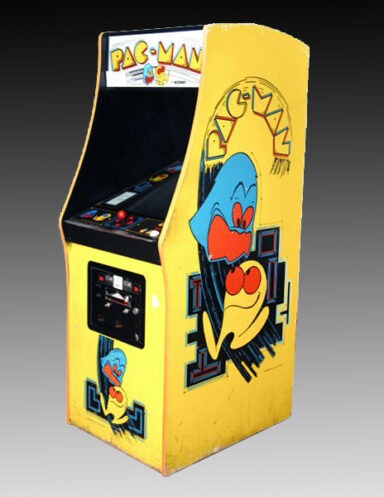
A missing slice of pizza inspires Namco’s Toru Iwatani to create Pac-Man, which goes on sale in July 1980. That year a version of Pac-Man for Atari 2600 becomes the first arcade hit to appear on a home console. Two years later, Ms. Pac-Man strikes a blow for gender equality by becoming the best-selling arcade game of all time.
1980

The Game & Watch brand is a series of handheld electronic games developed, manufactured, released, and marketed by Nintendo from 1980 to 1991. Created by game designer Gunpei Yokoi, the product derived its name from it featuring a single game as well as a clock on an LCD screen. The models from 1981 onwards featured an alarm in addition.
1980
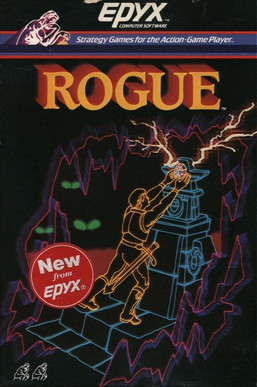
In Rogue, players control a character as they explore several levels of a dungeon seeking the Amulet of Yendor located in the dungeon’s lowest level. The player character must fend off an array of monsters that roam the dungeons. Along the way, players can collect treasures that can help them offensively or defensively, such as weapons, armor, potions, scrolls, and other magical items. Rogue is turn-based, taking place on a square grid represented in ASCII or other fixed character set, allowing players to have time to determine the best move to survive.
1981

Video game fans go ape over Nintendo’s Donkey Kong, featuring a character that would become world-famous: Jumpman. Never heard of him? That’s because he’s better known as Mario—the name he took when his creator, Shigeru Miyamoto, makes him the star of a later game by Nintendo.
The success of Donkey Kong positioned the company for market dominance from 1981 through the late 1990s. Mario became Nintendo’s mascot and one of the world’s most recognizable characters. Donkey Kong pioneered the platform game genre before the term existed; it is one of the most important games from the golden age of arcade video games and one of the most popular arcade games of all time.
1982
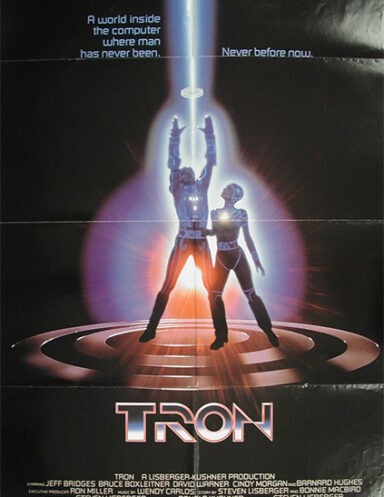
Disney taps into the video game craze by releasing the movie Tron. An arcade game featuring many of the contests from the movie also becomes a hit.
1983
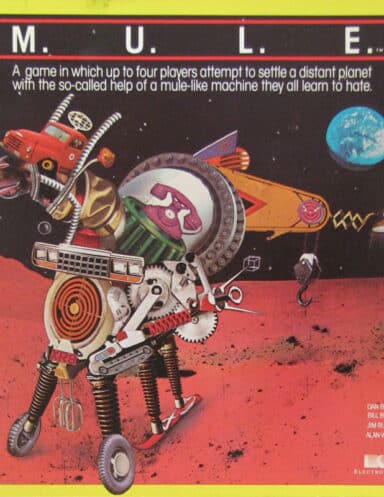
Multiplayer play takes a huge step forward with Dan Bunten’s M.U.L.E. In the game, players compete to gather the most resources while saving their colony on the planet of Irata.
Video Game Crash of 1983
The video game crash of 1983 (known in Japan as the Atari shock)[1] was a large-scale recession in the video game industry that occurred from 1983 to 1985, primarily in the United States. The crash was attributed to several factors, including market saturation in the number of video game consoles and available games, many of which were of poor quality. Waning interest in console games in favor of personal computers also played a role. Home video game revenue peaked at around $3.2 billion in 1983, then fell to around $100 million by 1985 (a drop of almost 97 percent).
- Main causes
- Flooded console market
- Loss of publishing control
- Lack of consumer confidence
- Competition from home computers
1984
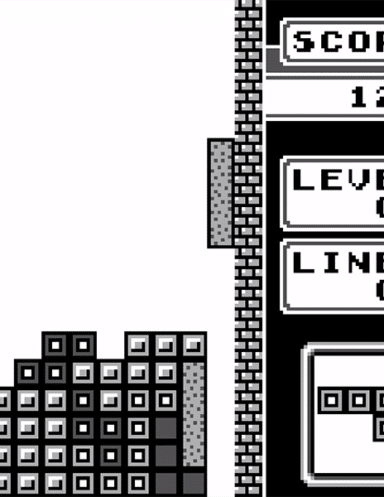
Russian mathematician Alexey Pajitnov creates Tetris, a simple but addictive puzzle game. The game leaks out from behind the Iron Curtain, and five years later, Nintendo bundles it with every new Game Boy.
It was proven that for the “offline” version of Tetris (the player knows the complete sequence of pieces that will be dropped) the following objectives are NP-complete:
- Maximizing the number of rows cleared
- Maximizing the number of pieces placed
- Maximizing the number of simultaneous clearing of four rows.
- Minimizing the height of the highest filled grid square
1985
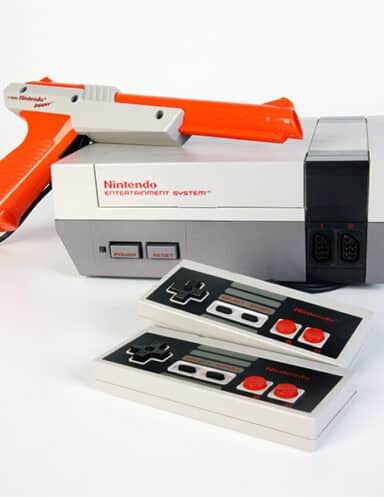
The Nintendo Entertainment System (NES) revives an ailing United States video game industry two years after the Nintendo Corporation released it in Japan as Famicom (Family Computer).
1985

MUD2 is the successor of MUD1, Richard Bartle’s pioneering Multi-User Dungeon. Rather than a sequel, it is the result of over 20 years of continuous development, and is still largely based on the game’s original code.
The game is nominally a roleplaying game, with a very strict set of rules, character classes and levels. Character progress up a ladder of 11 levels until they reach the traditional MUD goal of wiz (wizard or witch).
1986

The emerging educational software market leaps ahead with the introduction of The Learning Company’s Reader Rabbit program. The educational computer business mushrooms with the introduction of CD-ROMs in the 1990s, but crashes with the rise of the Internet.
1987
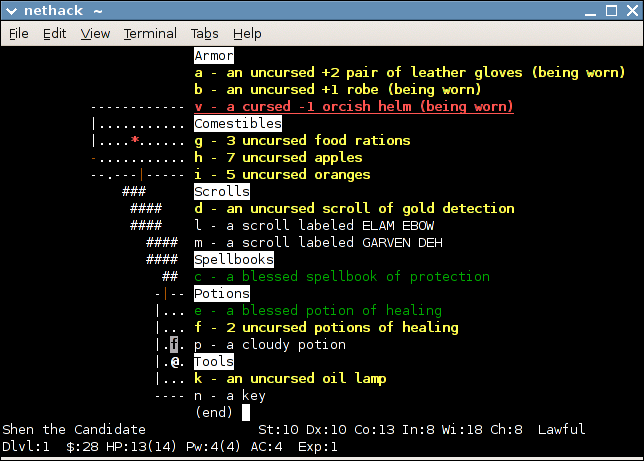
NetHack is an open source single-player roguelike video game, first released in 1987 and maintained by the NetHack DevTeam. The game is a fork of the 1982 game Hack, itself inspired by the 1980 game Rogue. The player takes the role of one of several pre-defined character classes to descend through multiple dungeon floors, fighting monsters and collecting treasure, to recover the “Amulet of Yendor” at the lowest floor and then escape.
Nethack received its latest patch in 2023, after 36 years of development, raising it to version 3.6.7.
1987
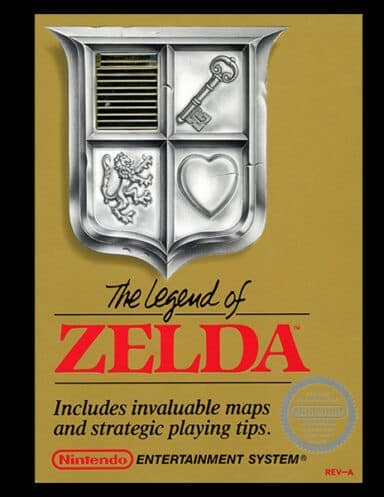
It’s a good year for fantasy Role Playing Games, as Shigeru Miyamoto creates Legend of Zelda, SSI wins the video game license for Dungeons and Dragons, and Sierra’s Leisure Suit Larry gives players a different kind of adult role playing game.
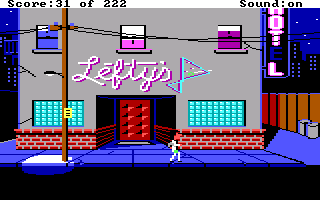
1988
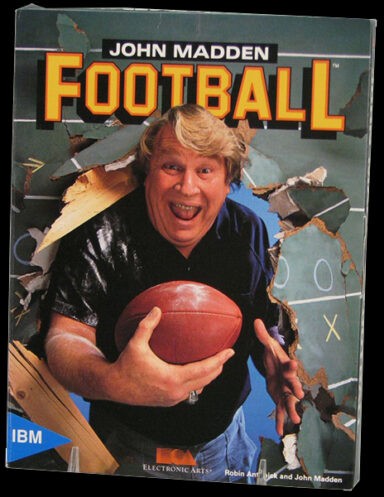
John Madden Football introduces gridiron realism to computer games, making this game —and its many console sequels— perennial best-sellers. The game originally released for the Apple II, in 1988 following the success of Earl Weaver Baseball. It was later ported to MS-DOS and the Commodore 64.
1989
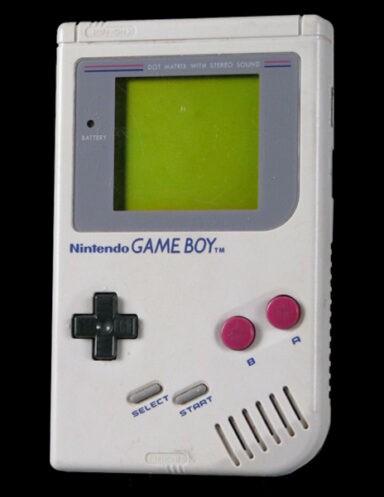
Nintendo’s Game Boy popularizes handheld gaming. Game Boy is not the first handheld system with interchangeable cartridges —Milton Bradley introduced Microvision 10 years earlier— but it charms users with its good game play, ease of use, and long battery life.
1990

Microsoft bundles a video game version of the classic card game solitaire with Windows 3.0. Millions of users who would not normally pick up a game console find they enjoy playing computer games. Solitaire becomes one of the most popular electronic games ever and provides a gaming model for quick, easy-to-play, casual games like Bejeweled.
1991

Sega needs an iconic hero for its Genesis (known as Mega Drive in Japan) system and finds it in Sonic the Hedgehog. Gamers, especially in the United States, snap up Sega systems and love the little blue guy’s blazing speed and edgy attitude.
Players control Sonic the Hedgehog, who can run at near supersonic speeds; Sonic sets out on a quest to defeat Dr. Robotnik, a scientist who has imprisoned animals in robots and seeks the powerful Chaos Emeralds. The gameplay involves collecting rings as a form of health, and a simple control scheme, with jumping and attacking controlled by a single button.
1992

Westwood Studios’ Dune II establishes the popularity of real-time strategy games that require players to act as military leaders deploying their resources and forces on the fly in order to defeat opponents.
It is based upon David Lynch’s 1984 film Dune, an adaptation of Frank Herbert’s science fiction novel of the same name.
Dune II is the archetypal real-time strategy game. Striking a balance between complexity and innovation, it was a huge success and laid the foundation for Command & Conquer, Warcraft, and many other RTS games that followed.
1993

Concern about bloodshed in games such as Mortal Kombat prompts United States Senate hearings on video game violence. The controversy riles the industry and prompts the creation of a video game rating system. Ironically, that same year the game Doom popularizes “first person shooters.”
1993

Doom is a first-person shooter game developed and published by id Software. Released on December 10, 1993, for DOS, it is the first installment in the Doom franchise. The player assumes the role of a space marine, later unofficially referred to as Doomguy, fighting through hordes of undead humans and invading demons. The game begins on the moons of Mars and finishes in hell, with the player traversing each level to find its exit or defeat its final boss. It is an early example of 3D graphics in video games, and has enemies and objects as 2D images, a technique sometimes referred to as 2.5D graphics.
It has been termed the “father” of first-person shooters and is regarded as one of the most important games in the genre.
1994

Blizzard releases Warcraft: Orcs and Humans, a real-time strategy game that introduces millions of players to the legendary world of Azeroth.
Although Warcraft: Orcs & Humans is not the first RTS game to have offered multiplayer gameplay, it persuaded a wider audience that multiplayer capabilities were essential for future RTS games. The game introduced innovations in its mission design and gameplay elements, which were adopted by other RTS developers.
1995

Sony releases PlayStation in the United States, selling for $100 less than Sega Saturn. The lower price point, along with the arrival of Nintendo 64 in 1996, weakens Sega’s home console business. When Sony PlayStation 2 debuts in 2000, it becomes the dominant home console and Sega exits the home console business.
1996

Lara Croft debuts as the star of Eidos’s adventure game Tomb Raider. Players love her, but critics charge that she’s an example of sexism in video games.
1997
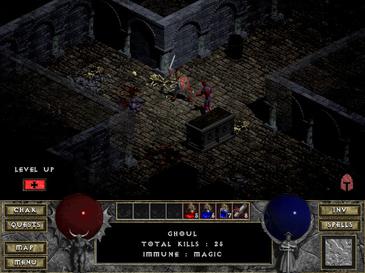
Diablo is an action role-playing video game developed by Blizzard North and released by Blizzard Entertainment in January 1997, and is the first installment in the video game series of the same name.
Set in the fictional Kingdom of Khanduras in the mortal realm, the player controls a lone hero battling to rid the world of Diablo, the Lord of Terror. Beneath the town of Tristram, the player journeys through sixteen randomly generated dungeon levels, ultimately entering Hell in order to face Diablo.
1997

Machine triumphs over man as IBM’s supercomputer chess program Deep Blue defeats world champion Gary Kasparov in a match.
1998

Legend of Zelda: Ocarina of Time transports players to the richly imagined world of Hyrule, full of engaging characters, thought-provoking puzzles, and the most memorable musical instrument to ever appear in a video game.
1999

Sony Online Entertainment’s Everquest leads hundreds of thousands of users to join guilds, fight monsters, and level up in the multiplayer online world of Norrath.
2000

Will Wright’s The Sims models real life. It is not the first simulation game —Utopia on Intellivision (1982), Peter Molyneaux’s Populous (1989), Sid Meier’s Civilization (1991), and Wright’s own SimCity (1989) preceded it— but it becomes the best-selling computer game ever and the most popular game with female players.
2001

Microsoft enters the video game market with Xbox and hit games like Halo: Combat Evolved. Four years later, Xbox 360 gains millions of fans with its advanced graphics and seamless online play.
2021

The U.S. Army releases America’s Army video game to help recruit and communicate with a new generation of electronic gamers, and the Woodrow Wilson International Center for Scholars launches the Serious Games Initiative to encourage the development of games that address policy and management issues.
2003

Valve energizes PC gaming with its release of Steam. The digital distribution platform allows players to download, play, and update games.
The service is the largest digital distribution platform for PC games, with an estimated 75% of the market share in 2013 according to IHS Screen Digest. By 2017, game purchases through Steam totaled about US$4.3 billion, or at least 18% of global PC game sales according to Steam Spy. By 2021, the service had over 34,000 games with over 132 million monthly active users.
2004

Nintendo maintains its dominance of the handheld market with the Nintendo DS, an easy-to-use, portable gaming system packed with two processors, two screens, multiplayer capabilities, and a stylus for the touchscreen. Great games like Super Mario Kart DS helped too.
2005

Microsoft’s Xbox 360 brings high-definition realism to the game market, as well as even better multiplayer competitions on Xbox Live and popular titles such as Alan Wake.
2006

Nintendo Wii gets gamers off the couch and moving with innovative, motion-sensitive remotes. Not only does Nintendo make gaming more active, it also appeals to millions of people who never before liked video games.
Within a year of launch, the Wii became the best-selling seventh-generation console, and by 2013, had surpassed over 100 million units sold. However, the interest was lost after 2016 and user base declined quickly. Nintendo shut down all online services by 2019, effectively killing Wii.
2007

Grab your guitar, microphone, bass, or drums, and start playing Rock Band. That’s what millions of would-be musicians did with Harmonix’s hit title.
2008

Four years after its release (2004), World of Warcraft surpasses 10 million subscribers, making it the most popular Massively Multiplayer Online (MMO) game ever. MMOs create entire virtual universes for players and redefine how we play, learn, and relate to one another.
Similar to other MMORPGs, the game allows players to create a character avatar and explore an open game world in third- or first-person view, exploring the landscape, fighting various monsters, completing quests, and interacting with non-player characters (NPCs) or other players.
2009

Social games like Farmville and mobile games like Angry Birds shake up the games industry. Millions of people who never would have considered themselves gamers now while away hours playing games on new platforms like Facebook and the iPhone.
2010

The indie game movement comes of age with the tremendous popularity of Minecraft, the addictive brick-building game from Swedish developer Markus Persson.
Minecraft has become the best-selling video game in history, with over 300 million copies sold and nearly 140 million monthly active players as of 2023. It has been ported to several platforms.
2011

Skylanders: Spyro’s Adventure becomes the first augmented-reality hit by letting players place plastic figures on a Portal of Power to zap characters into the game. Two years later Disney Infinity joins the ranks of toy-video game hybrids.
2012

Crowdfunding site Kickstarter enables game creators to raise millions of dollars to produce new and experimental play platforms such as the OUYA console and the Oculus Rift.
2013

Gone Home, The Last of Us, and Papers, Please usher in a new wave of mature video game stories that confront players with tough emotional choices in ethically-complex worlds.
2014

“Free-to-play” becomes a dominant business model as blockbusters such as CrossFire, Clash of Clans, World of Tanks, and even Kim Kardashian: Hollywood achieve sales in the hundreds of millions of dollars through microtransaction payments for in-game items and premium content.
2015

One year after being acquired by Amazon, online video streaming service Twitch fuels the growth of eSports. Thirty-six million viewers watch the League of Legends World Championship, rivaling and surpassing viewership of some of the most popular athletic events in the world.
2016

Players hunt for virtual creatures like Pikachu and Horsea in the real world with Niantic’s free-to-play hit Pokémon Go. It’s the gaming sensation of the summer, and commenters debate whether it’s just a fad or represents a bright future for augmented reality.
2017

As smartphones and tablets become more popular as gaming platforms, Nintendo’s Switch is a hybrid that blends mobile and console experiences. The innovative system allows players to take hit games like Legend of Zelda: Breath of the Wild and Super Mario Odyssey with them wherever they go.
2018

Microsoft’s Xbox Adaptive Controller makes gaming on Xbox One consoles and Windows 10 PCs more accessible for players with limited mobility. Its two large programmable buttons and 19 jacks empower players to connect additional switches, joysticks, and other assistive devices to customize the way they play their favorite games.
2019

Millions of players tune in to watch a virtual asteroid destroy the map of Epic Games’ massively popular online battle royale game Fortnite. The game, which earned a staggering $2.4 billion in 2018, respawned two days later with a new map dubbed Fortnite: Chapter 2.
2020

A global pandemic fuels the growth of the video game industry. Millions of people turn to games like Animal Crossing: New Horizons, Among Us, and Fall Guys to play and connect with friends and strangers through the safety of their mobile phones, computers, and consoles.
2021

Players escape the eerie Underworld of Greek myth in Supergiant’s action role-playing game Hades, released for console in 2021. Its monster battles and compelling story helped make it the first video game to win a prestigious Hugo Award for science fiction.
2022

The New York Times buys Wordle after the five-letter guessing game goes viral.